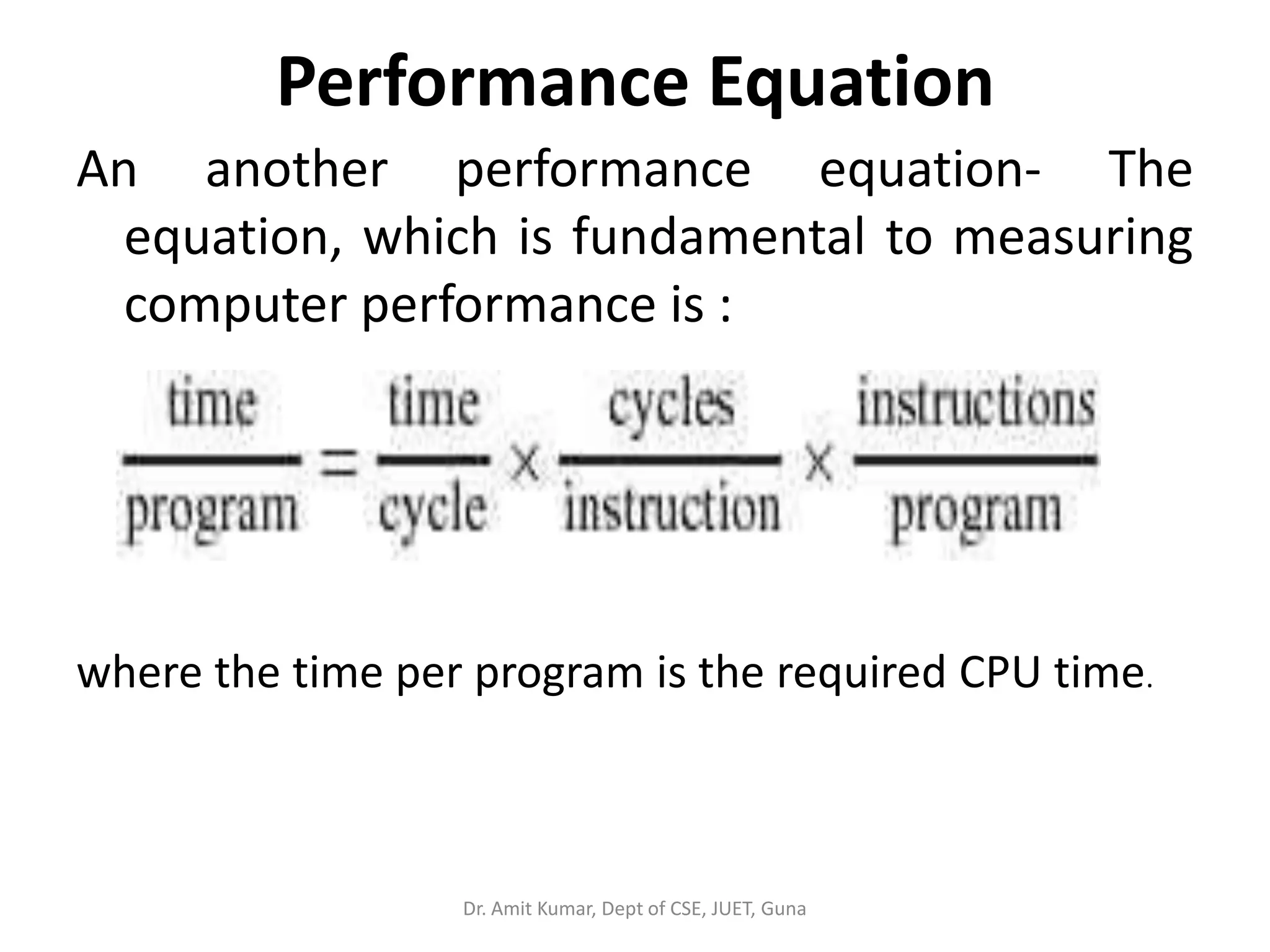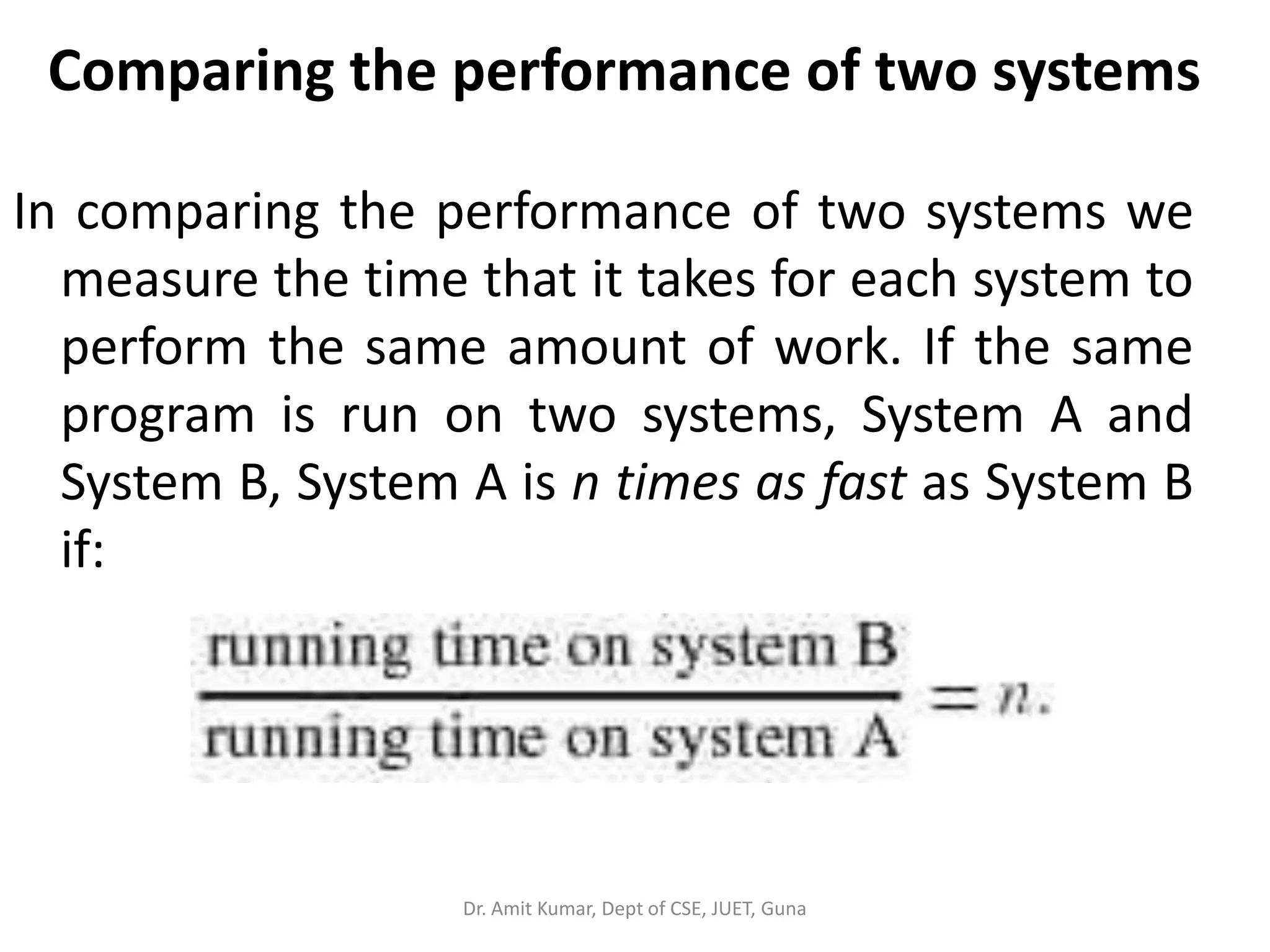Computer performance is characterized by the amount of useful work accomplished by a system over the resources and time used. It can be measured through metrics like response time, throughput, and utilization. Several factors influence performance, including hardware, software, memory, and I/O. Benchmarks are used to evaluate performance by measuring how systems perform standard tasks. Maintaining high performance requires optimizing these various components through techniques like CPU enhancement, memory improvement, and I/O optimization.





























![Basic Performance Metrics
• Time related:
– Execution time [seconds]
• wall clock time
• system and user time
– Latency
– Response time
• Rate related:
– Rate of computation
• floating point operations per second [flops]
• integer operations per second [ops]
– Data transfer (I/O) rate [bytes/second]
• Effectiveness:
– Efficiency [%]
– Memory consumption [bytes]
– Productivity [utility/($*second)]
• Modifiers:
– Sustained
– Peak
– Theoretical peak Dr. Amit Kumar, Dept of CSE, JUET, Guna](https://image.slidesharecdn.com/computerperformance-180428051010/75/Computer-performance-30-2048.jpg)
![What Is a Benchmark?
• Benchmark: a standardized problem or test that serves as a
basis for evaluation or comparison (as of computer system
performance) [Merriam-Webster]
• The term “benchmark” also commonly applies to specially-
designed programs used in benchmarking
• A benchmark should:
– be domain specific (the more general the benchmark, the less useful it
is for anything in particular)
– be a distillation of the essential attributes of a workload
– avoid using single metric to express the overall performance
• Computational benchmark kinds
– synthetic: specially-created programs that impose the load on the
specific component in the system
– application: derived from a real-world application program
Dr. Amit Kumar, Dept of CSE, JUET, Guna](https://image.slidesharecdn.com/computerperformance-180428051010/75/Computer-performance-31-2048.jpg)


